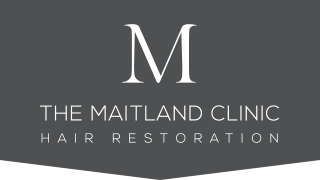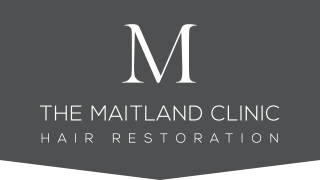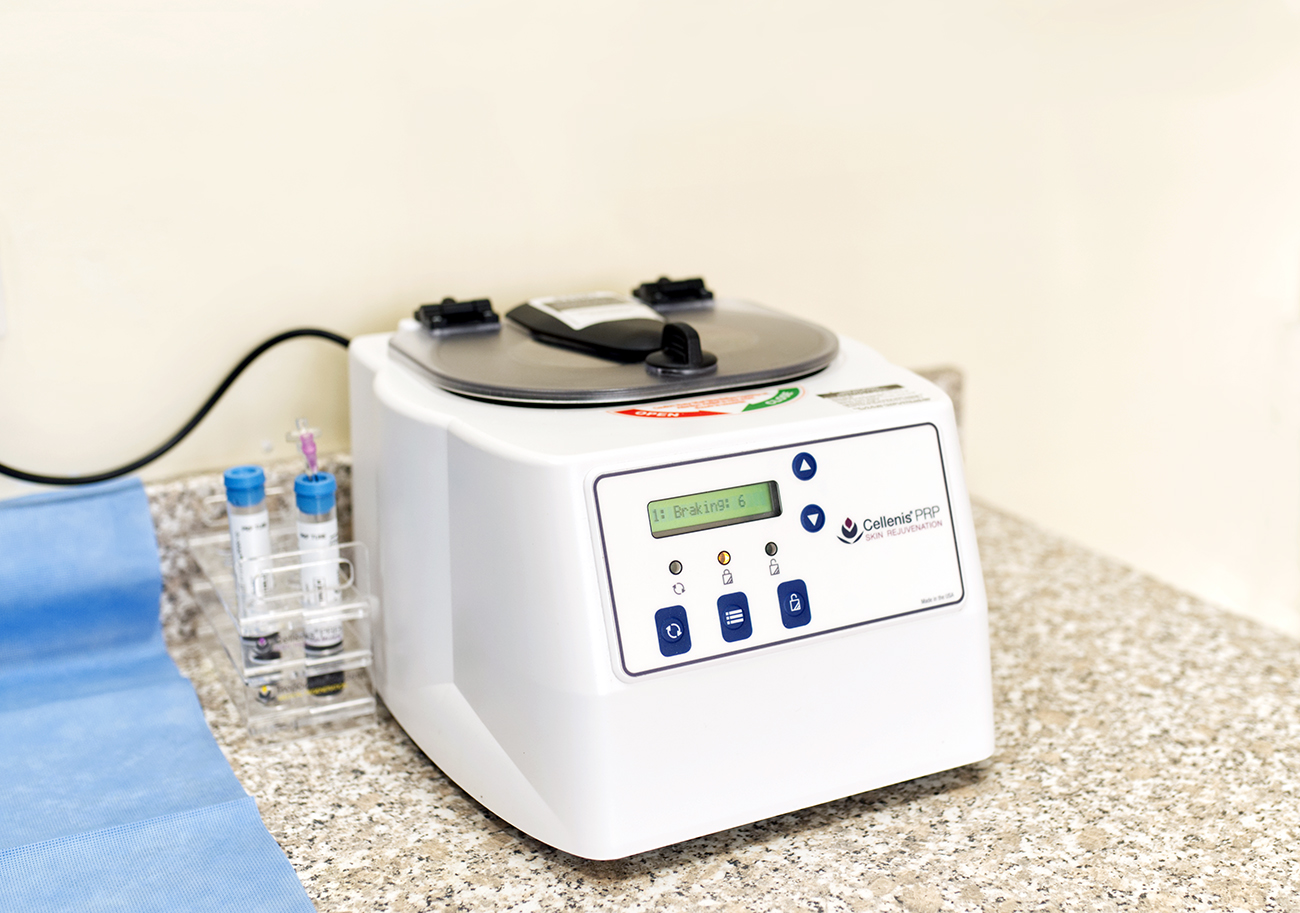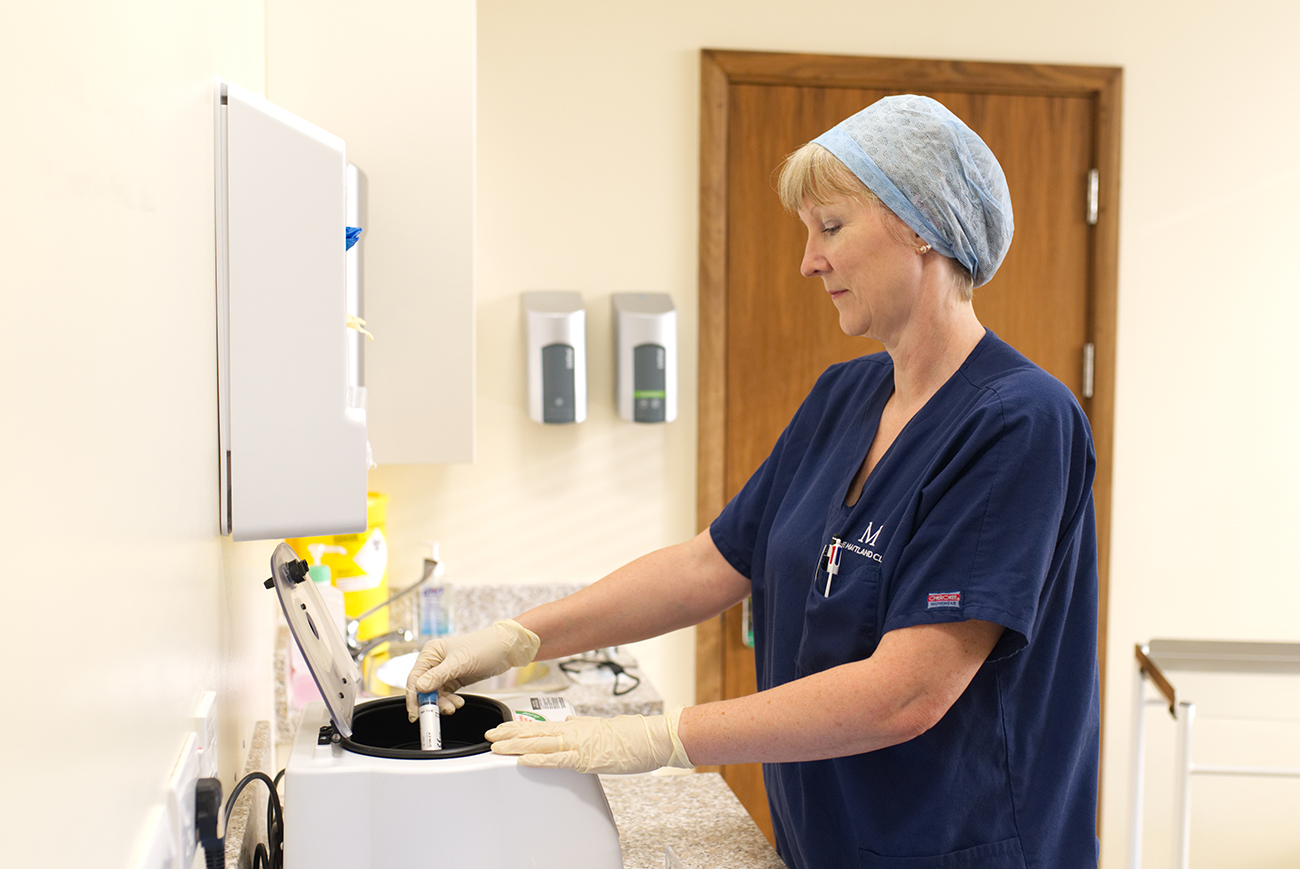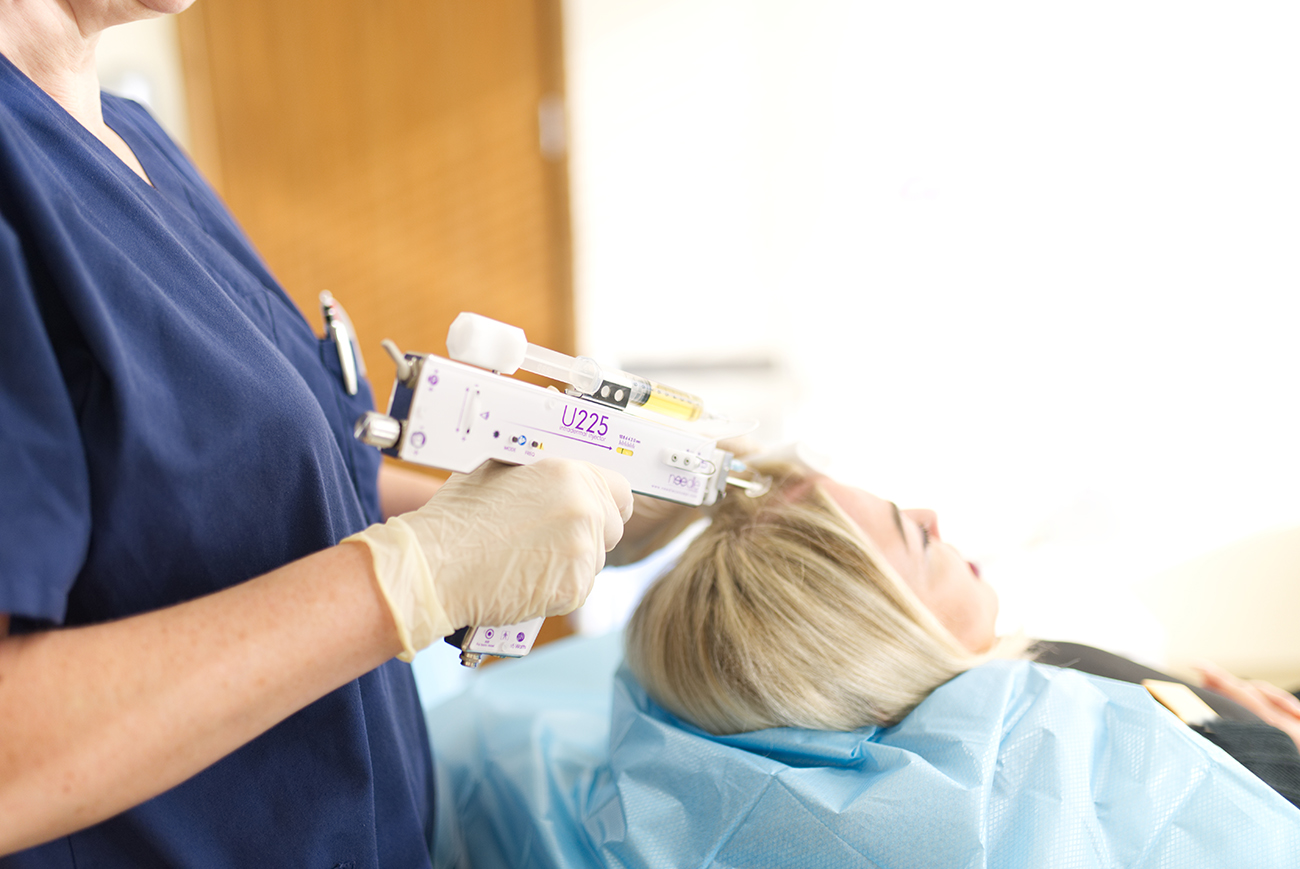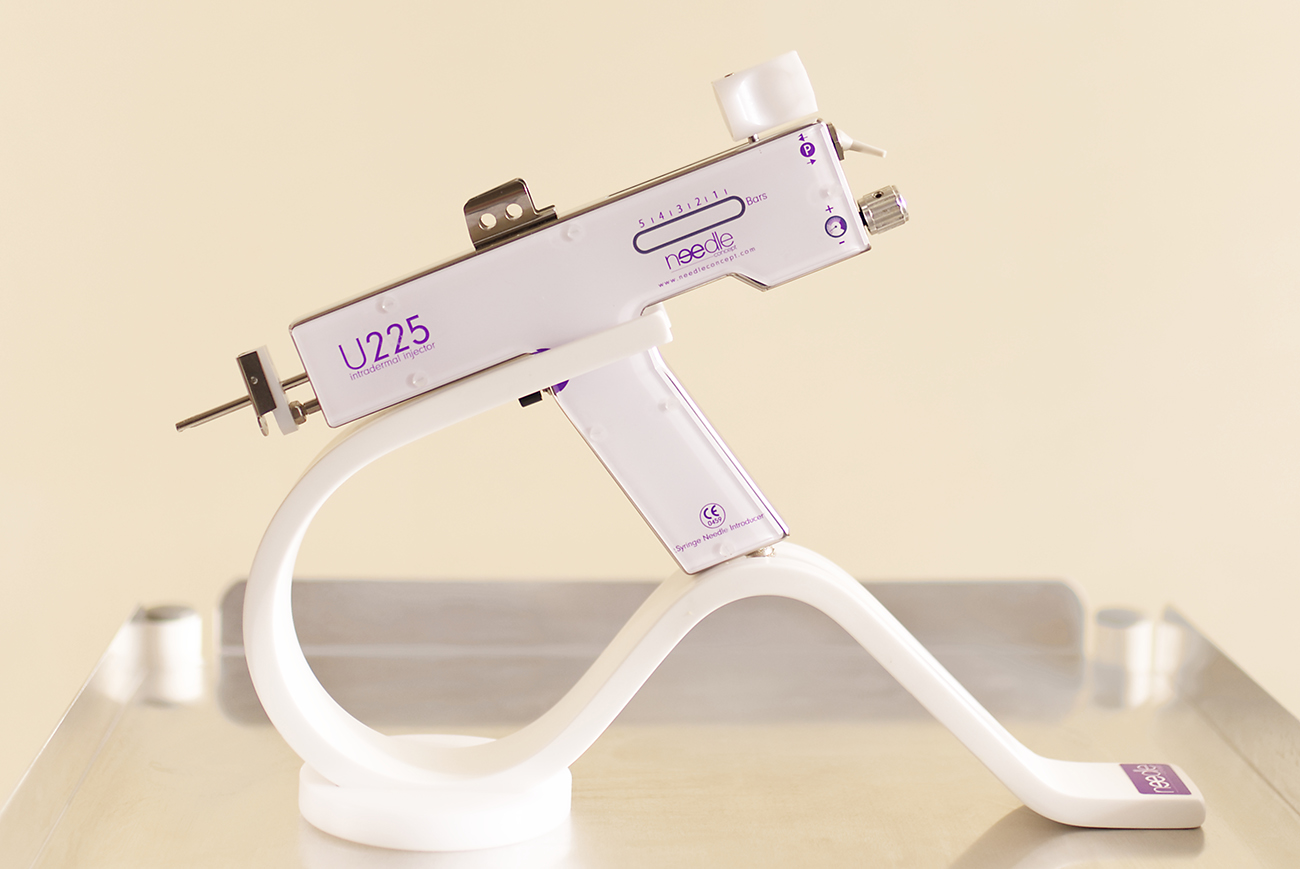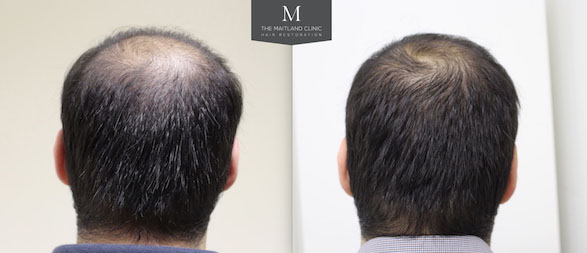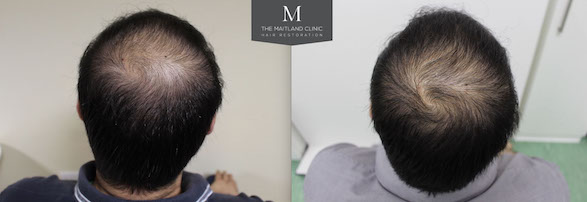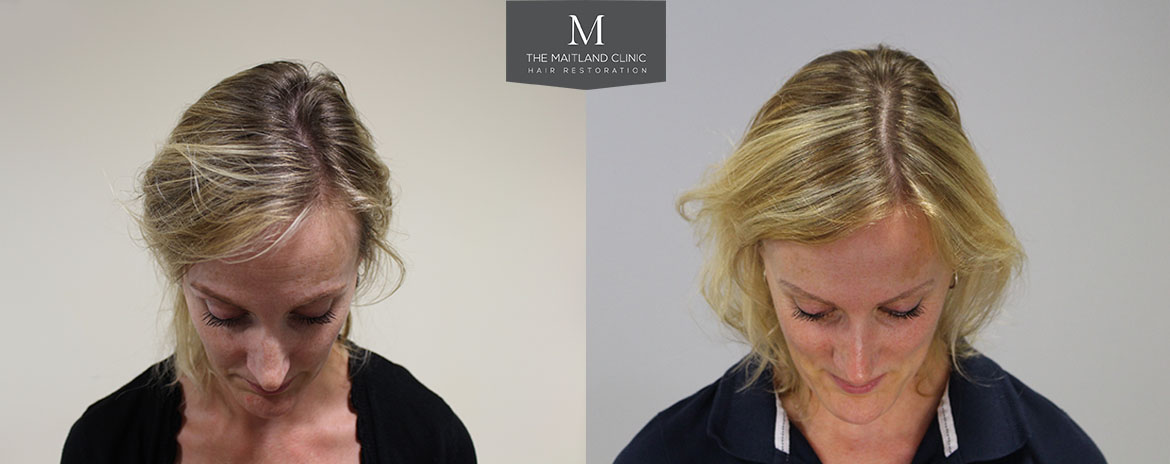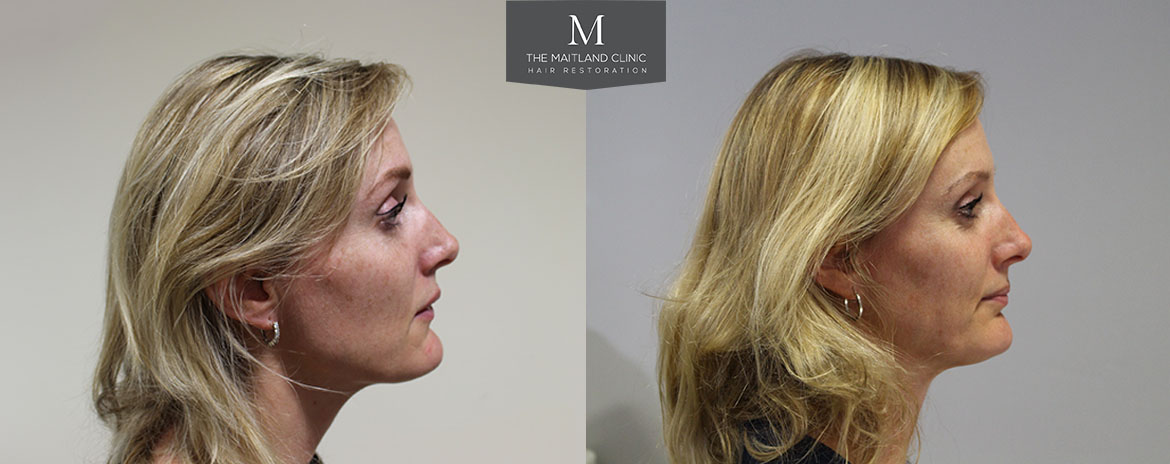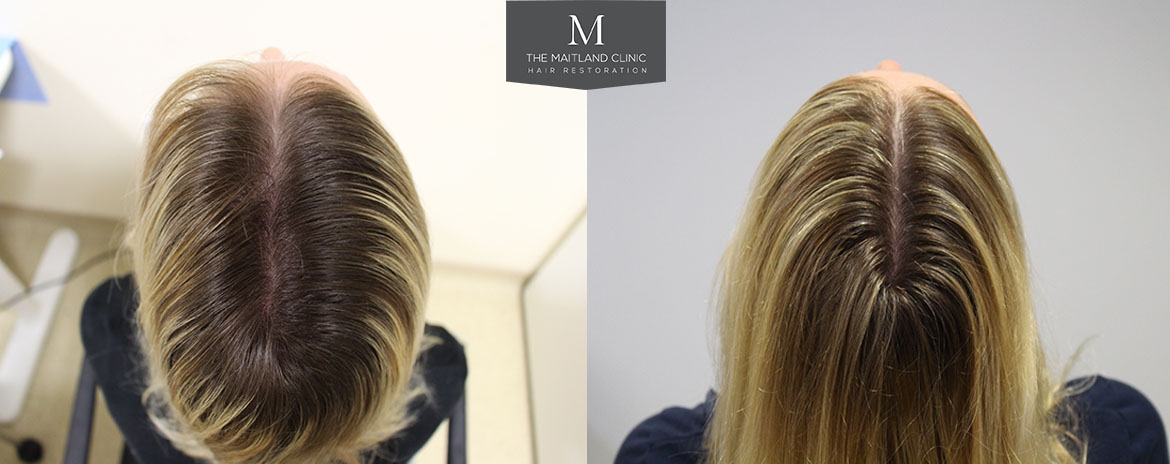Non-surgical treatments
Medication | Laser treatment | Platelet rich plasma | Trichopigmentation
What is PRP treatment?
PRP (platelet-rich plasma) is a non-surgical treatment for hair loss. It involves small scalp injections of a concentrated solution derived from a sample of your own blood. It is a form of ‘biotherapy’, which utilises your own body’s ability to heal and repair. For this reason it often appeals to people who would like to avoid pharmaceutical products or who would like to add to other hair loss treatments that they may be using.
PRP is a fairly new treatment option for hair loss. However, it has been used extensively for joint conditions and facial skin rejuvenation, and many studies researching PPR have been published in peer-reviewed journals. It has been shown to be a very safe treatment and, although every patient’s response will be different, we are seeing very encouraging results when treating hair loss.
Are all PRP treatments the same?
No. PRP is a very broad term and the chances of achieving a successful outcome are dependent on many factors. The concentration of platelets and other blood components in the PRP sample need to be precisely controlled and adjusted according to the condition being treated. The choice of centrifuge device used to produce the PRP sample is crucial. It is important to check the scientific credentials of the device used for your treatment, as well as the practitioner’s rationale behind the particular approach they are advising.
What is in a PRP injection?
Plasma is the fluid component of blood and makes up the majority of its volume. There are three types of blood cells in the plasma, red blood cells which carry oxygen, white blood cells which help fight infections, and platelets which are responsible blood clotting, scab formation, wound healing and repair. PRP is a plasma solution which contains about five times the concentration of the normal platelet level. After injury, platelets play a critical role in the healing response by releasing growth factors. Growth factors are a group of proteins that stimulate the growth of specific tissues. Many of these growth factors are thought to promote hair growth.
How does PRP work?
We do not know exactly how PRP stimulates hair growth. There are limited studies that show PRP can stimulate hair growth in the laboratory and clinical trials. It is postulated that the growth factors in PRP stimulate new blood vessels, amplifies your natural wound healing process and even possibly stimulates stem cells. More research is needed to identify how PRP works in stimulating hair growth.
How is PRP prepared?
After drawing your blood the platelet rich plasma is separated from the rest of the blood by using an automated centrifuge system.
How much blood is drawn?
We only require a very small sample of blood. We use a butterfly needle and most patients say this part is pain-free.
What does the treatment involve?
Once we have separated the PRP from your blood sample, this is injected just beneath the skin in precise quantities and at a precise depth. We suggest that the treatment be repeated for 3 sessions, at 4 to 6 week intervals. To maintain the benefits, we recommend repeating a single treatment session every 4-6 months.
Are there risks of PRP?
Since PRP is derived from your own blood safety concerns are minimal. So far no studies have shown any safety concerns or significant side effects of PRP. PRP has been used for years in orthopaedic medicine and dental procedures without any reported side effects.
Some patients have discomfort after the procedure but most do not report pain. There is the possibility of some scalp and forehead swelling that tends to resolve within 3-5 days.
Contraindications
Please inform us if you are on anticoagulant therapy (Warfarin, NOACs), taking a Beta Blocker, have an active infection or scalp condition or are pregnant.
Are you a candidate for PRP?
PRP can be used in two ways, as a stand-alone therapy or an adjunct to hair transplantation.
1) Stand-alone therapy:
For both men and women who have thinning hair but not enough thinning to be a candidate for hair transplantation. For men and women who cannot tolerate other medical treatments such as Propecia (finasteride) or Regaine (minoxidil), or who wish to use them in combination for added benefit.
2) As an adjunct to hair transplant surgery.
There is a possibility that PRP could be used to enhance the body’s own natural healing after a transplant both in the donor and recipient area. There is very little research regarding the use of PRP in this way and most available information is anecdotal. Also, if one has a limited donor hair supply and can only address part of the balding area in one surgery PRP can be used as an adjunct to stimulate hair growth in areas not transplanted.
Will PRP work for you?
We have seen some very good results from PRP used in areas of thinning hair. However, it does not work for all patients and we do not know why it works better in some cases than others. At The Maitland Clinic, we have decided to offer PRP due to some excellent results seen by ourselves and some of the top physicians in the global hair transplant industry and some studies that have shown good results. But we all still have a lot to learn. It works best in areas where there is still a lot of miniaturised hair and is unlikely to work well in areas that are completely bald.
What is the cost of a PRP treatment?
The cost of a single PRP treatment session for one area of the scalp (either the frontal half or the crown) starts at £395 and £495 for two zones (entire top of the scalp). The recommended course is 3 treatments spaced one month apart and then one maintenance treatment every 4 months thereafter.
All new PRP patients will be required to have a consultation or conversation regarding the process before your first treatment. You will then be able to book your first PRP treatment.
The cost of our PRP reflects the quality of the treatment protocol, using state-of-the-art medical devices to process the blood sample safely and administer the PRP with precision and optimal comfort. We find that cheaper alternatives are less likely to achieve the correct effective concentration of platelets in order to maximise the potential for treatment success. Although alternative treatment protocols may be faster to perform, our patients tell us they can be much less comfortable compared to the U225 mesotherapy device that we use to administer our PRP.
You can watch PRP treatment being performed in the video below.
What Results can I expect?
PRP is a relatively new treatment for hair loss and research regarding its efficacy is still ongoing. We have recently written a blog detailing how long PRP hair treatment might last you.
Case study 1
This patient below shows his results three and a half months after his first PRP session at our clinic.
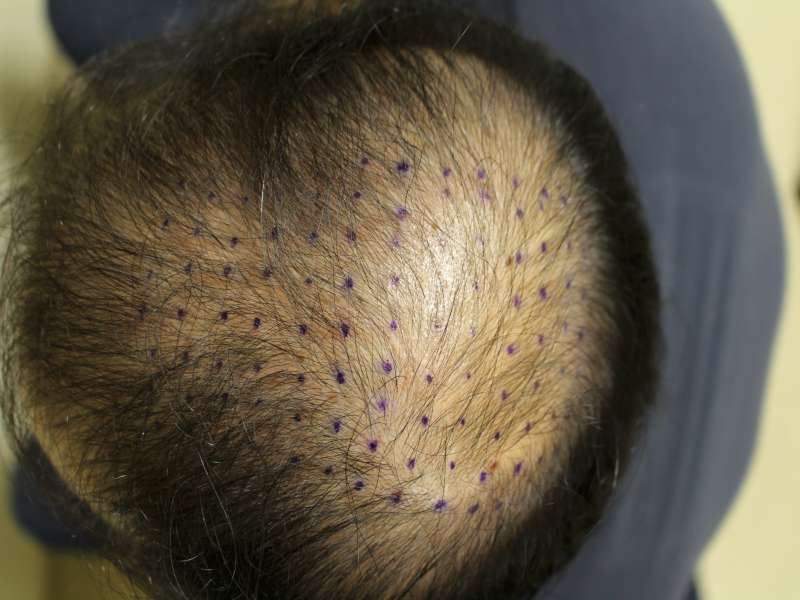
Before first treatment; this image shows the proposed areas of treatment.
Before (left) and after (right) three and a half months after PRP treatment into crown and mid scalp:
High magnification images of this gentleman’s central crown whorl before (left) and after (right) PRP treatments. This demonstrates how PRP can increase the hair diameter to improve density but does not grow new hair.
Case study 2
This patient had her first PRP session in August 2016, her second in June 2017 and came back for a review in December 2017. The images seen below are from her first session and review 16 months later.
Case study 3
This patient first visited us in his early 20s with thinning throughout the front and crown, it was advised by Dr Edward Ball to start treatment with Propecia for one year and review. At his follow up consultation it was recommended to start Platelet Rich Plasma treatment to see if further improvements could be made before considering hair transplant surgery.
These PRP results you can see are the progress after just two PRP treatments at The Maitland Clinic. As you can see the patient has responded very well to treatment and is continuing treatment rather than going ahead with surgery at this stage.
To discuss PRP treatments in more detail please contact us at The Maitland Clinic on 02392 706 122 or complete our contact form.
Contact us
* Required fields
